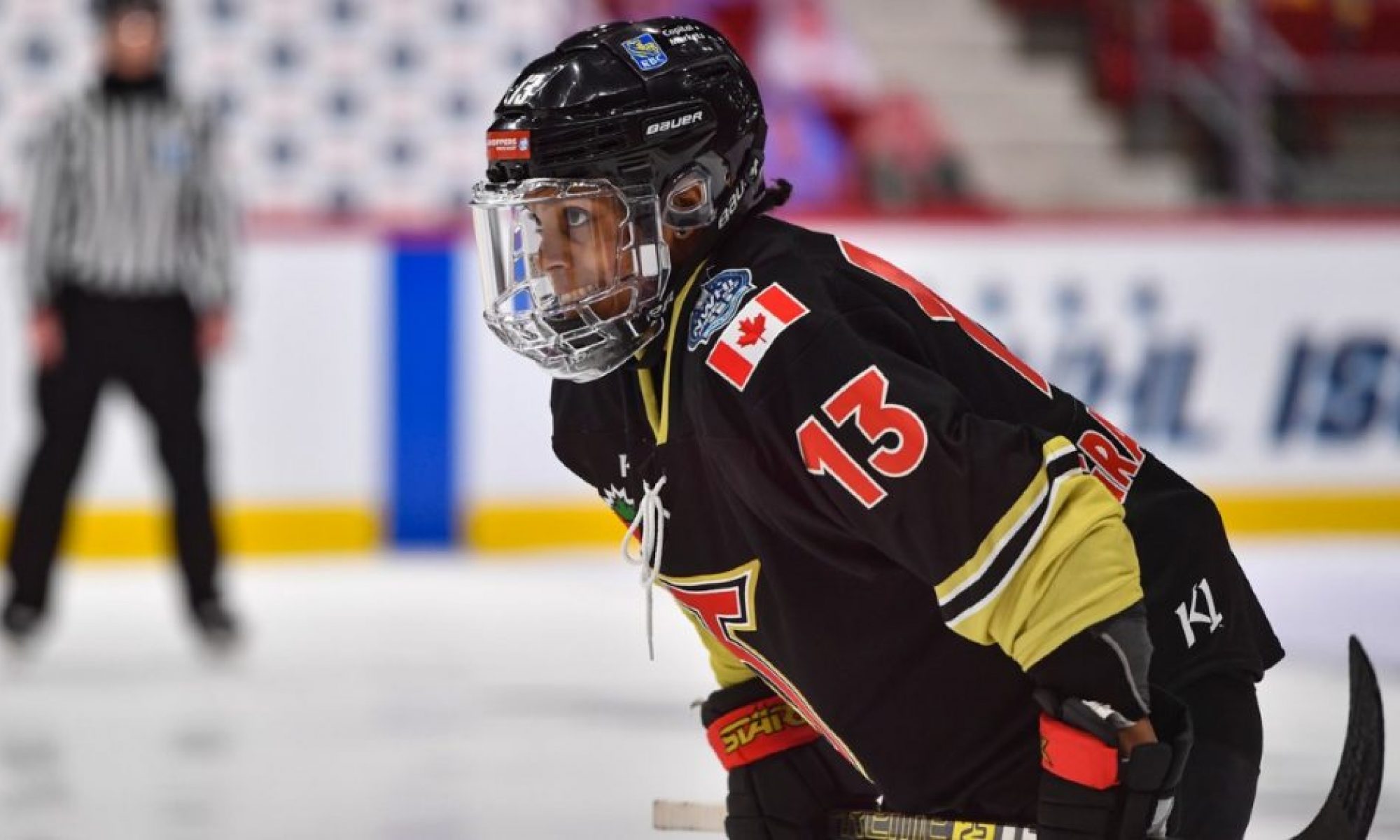How Black women in hockey are navigating the struggles of a white-dominated sport
If sports are supposed to be the great equalizer, someone forgot to tell hockey.
When telling people about this story, their initial reactions were almost unanimous.
“Black people play hockey?” they asked. Black women playing hockey seemed even more unfathomable to them.
Not only do Black women play hockey – they have excelled when given the opportunity even though their skills and talents typically are not celebrated.
Angela James – also known as the Wayne Gretsky of women’s hockey – was a center and defender from Toronto, Ontario. She racked up six MVPs across multiple women’s hockey leagues and claimed seven gold medals in tournaments from 1980 to 2000. Despite all of her accolades and stardom in the sport, she was still left off the inaugural Canadian Olympic team for women’s ice hockey in 1998. Though it was at the end of her career, she was still at the top of her game and would go on to win another MVP award that year.
While there is no proof race played a role in the selection process, it is hard not to believe it did given her stats and subsequent omission. In an interview with Tara Slone, James reflected on her exclusion from the Olympics.
“From what I was told, they wanted to go in a different direction and I got caught up in it,” said James. “In saying that, you know, that’s political. Do I have to have representation from this group, and do I need to have representation from this province.”
In 2008, James finally got her long-overdue recognition as she became the first Black woman enshrined in the International Ice Hockey Hall of Fame. Two years later, she joined the Hockey Hall of Fame, again as the first Black woman.
“I can only say that I feel so very very privileged to be one of the first females to lead us into the great Hockey Hall of Fame,” said James in her Hockey Hall of Fame induction speech in 2010. “The time is right, we are here, and who is next.”
Two decades after James’ snub, things are inching in the right direction. Team Canada finally added their first Black woman in the 2018 Winter Olympics – Sarah Nurse, a biracial forward from Hamilton, Ontario. That team would go on to win the silver medal.
But the improvements do not stop at the international level.
The National Women’s Hockey League – which was recently rebranded as the more inclusive Premier Hockey Federation – is now entering its seventh season and is currently the only professional women’s hockey league in North America. As of this past season, the league has seen a small – but very noticeable – flurry of Black athletes join the top ranks of the league and leave an impact.
In 2015, with the birth of the league, Blake Bolden joined the Boston Pride as the first Black player. In 2016, Kelsey Koelzer became the first Black number one overall pick in a professional hockey league in North America when she was selected by the Metropolitan Riveters. And in 2020, Mikyla Grant-Mentis was named the league’s first Black MVP as a member of the Toronto Six.
Slowly but surely, the sport is becoming more diverse. However, breaking into the white-dominated space for a Black woman continues to be a lonely journey.
Koelzer said she can count on one hand how many diverse teammates she had played with throughout her hockey career. Grant-Mentis grew up playing on a team with her twin brother. However, that was the only Black teammate she had until she was joined by Saroya Tinker this year with the Toronto Six. Tinker also did not have a Black teammate until her senior year at Yale.
Up until joining Grant-Mentis in Toronto, Tinker struggled to feel accepted in the sport because of the color of her skin.
“I have always had or always felt I’ve had to take out a piece of my blackness to fit in,” said Tinker. “Whether it’s not dressing a certain way at the rink or not making a certain joke or not listening to a certain type of music. I think that’s definitely been a huge frustration for me.”
The lack of similar-looking teammates also stuck out to Koelzer as she rose through the ranks and was taunted with racial slurs on the ice.
“Once I got to that level and kind of started getting targeted more for [being Black], as opposed to for being the only girl,” said Koelzer, “I think that’s when the realization really hit me that I don’t look like anyone else.”
Sadly, being targeted for her race was not something exclusively experienced by Koelzer.
“I think the first time I was ever called the N-word was by my own teammates when I was around 12 or 13,” said Tinker.
The racism did not end there for her, she also endured discrimination from officials as well. She recalled a referee calling a penalty on “71 black.” The only problem – Tinker was wearing white.
Grant-Mentis has also been racially disrespected.
“There was like a scrum in front of the net and this girl told me to go back and play basketball,” said Grant-Mentis who felt attacked by the stereotype that all Black people play basketball.
Racism on the ice is similar to the failings of understanding and empathy in any other sport. Ultimately, the color of someone’s skin or their identities need to be removed from the zeitgeist of trash talk.
“We just need to learn how to stop using race as an insult and just fight the person or like just get them back, go score goal, or something,” said Grant-Mentis.
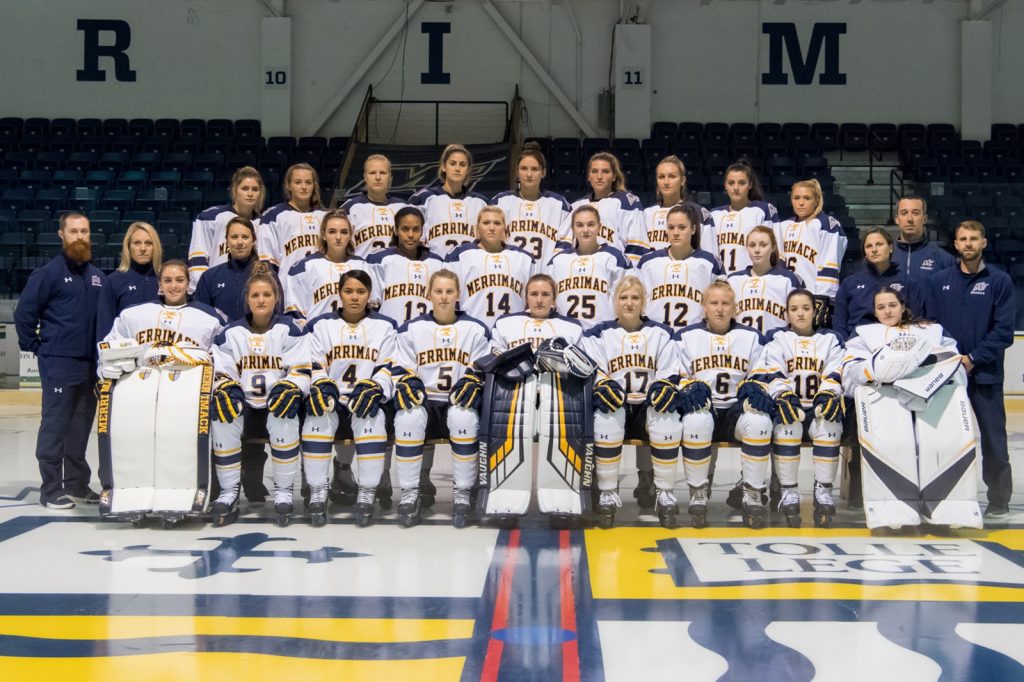
Not every Black player was alone in the early stages of their career, though. Sometimes that loneliness came later.
Sydney Kinder grew up playing with Ice Hockey in Harlem – a program for primarily underserved boys and girls in New York.
“Being an inner-city kid and seeing diversity all over the ice you don’t realize you’re different,” said Kinder.
As time went by and Kinder began to get more competitive, she realized that the number of people of color started to dwindle. That number took an even bigger hit when she eventually went to play hockey collegiately at both Mannahtanville College and SUNY Canton.
“You realize there’s very few of you on the ice and seeing someone of likeness is almost like mutual understanding of ‘you’re here too,’” said Kinder. “That’s something I definitely lacked in college.”
Like the other women, Kinder – now an athletic trainer for the University of Auburn’s volleyball program – also faced racism on the ice. She recounted a game against Utica College while at SUNY Canton where she was called the N-word on the ice.
“It’s jarring when you hear it, because I only existed in that word in that moment to that person,” said Kinder.
Being the “token kid” on her team she found it difficult to explain to her white coaches why the experience made her so upset.
“They get it, but they don’t get it,” said Kinder.
She did acknowledge that in the end her coaches were able to support her and did what they could to see actionable change, but in the moment, they struggled to understand.
Yet, in the face of the blatant racism hurled at these women of color, they held their heads up high and took pride in their teammates that did come to their aid.
Grant-Mentis applauded her teammates for being the ones who stuck up for her in the stereotype incident after not originally catching what had happened herself. She also added that in the aftermath of George Floyd’s murder several teammates reached out to her saying they would always be on her side and fight for her.
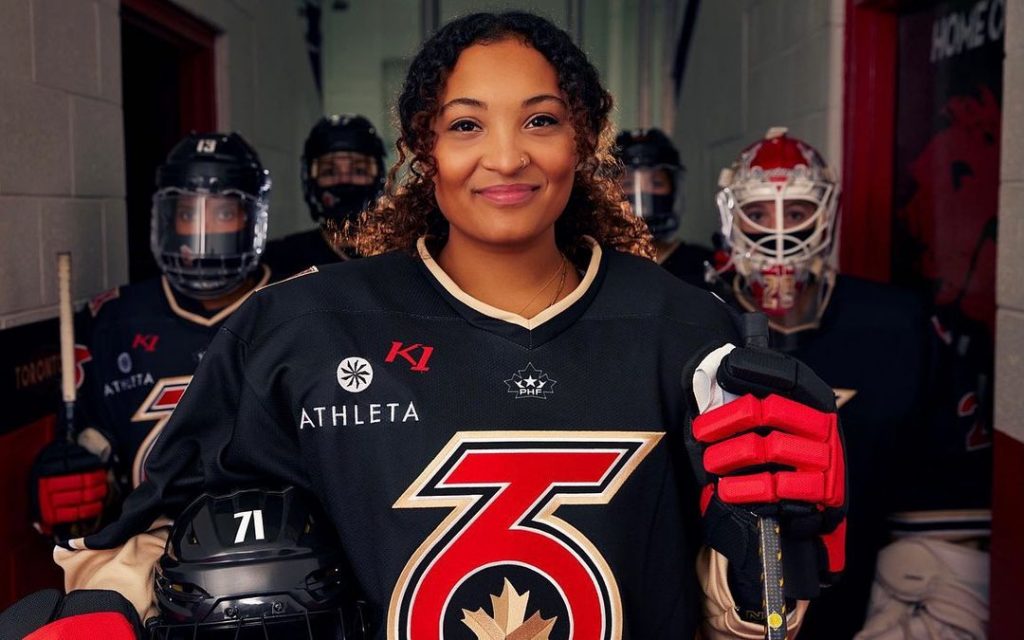
That is just one of many bright examples of how the Toronto Six – the only team in the PHF with Black players or Black coaches on the staff – are changing the sport. With Grant-Mentis and Tinker on the ice, and James taking on an assistant coaching job, the Six are a beacon to people of color around the world that there is a place for them in the sport.
Tinker thinks that one of the ways to get more people of color in hockey is through the signing of qualified Black players and hiring qualified Black coaches. Growing diversity in the game has also changed her level of comfort in the sport and she believes this will carry over to the next generation of hockey players.
“Having people that look like me makes me more comfortable,” said Tinker. “There are so many kids below me that can have this experience in their career so much earlier than myself.”
Grant-Mentis has big hopes for the trio of Black women leading the charge for the Six both on and off the ice.
“Hopefully we can do something with that and, hopefully, encourage other girls and other women of color to come in and coach if they have the credentials to do so,” said Grant-Mentis.
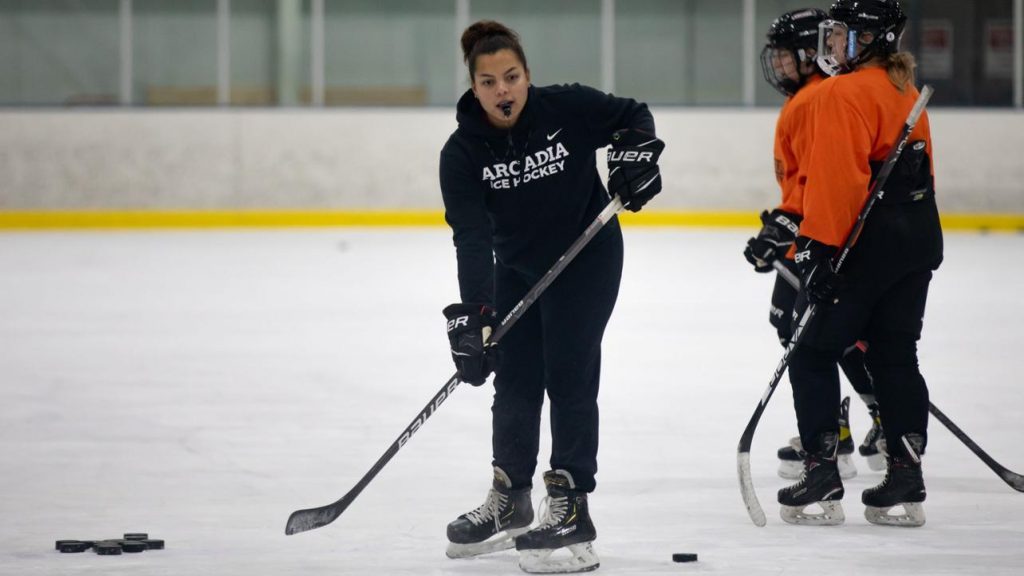
With Koelzer, the ranks of qualified coaches are growing. She recently kicked off her first season as the head coach of the Arcadia Women’s Ice Hockey team. Koelzer – the first Black number one pick – is now also the first Black female coach in NCAA ice hockey history.
“I appreciate the position that I am in being the first and what that can do for the future,” said Koelzer. “But on the day to day I’m just me, I’m a hockey coach.”
Regardless of how Koelzer sees herself, long-standing racial biases about the sport persist.
“I tell people that I coach and then they ask what sport, and I say ice hockey,” said Koelzer. “There’s always this initial level of shock because they don’t expect someone that looks like me to be involved in ice hockey in any which way.”
She is not alone either. Grant-Mentis seconded her sentiment.
“I don’t think anybody would ever believe that I was a Black girl, but then, when you see my face you’re like ‘oh she’s kind of good for a Black girl’ and it’s like, well, why can’t I just be good, you know?” said Grant-Mentis. “I’m just as good as everyone else but it’s like you had to make the comment that ‘oh she’s pretty good as a player of color.’”
Regardless of the growing recognition of these women’s talents, Black athletes continue to be snubbed at the highest level – the Olympics. Much like James, who was left off the Canadian National Team, Grant-Mentis also was not able to secure a spot, despite being one of the brightest young stars in the sport. She is still determined to get there for the 2022 Winter Olympics.
Koelzer also attempted an Olympic run in her playing days, however, she stated that her Olympic dreams are now over. Even though she was not able to make it herself, she has hope for what is yet to come for Team USA.
“Hopefully, in the future, there are a few more minority players that are given the opportunity to reach that kind of pinnacle point and every young girl’s dream when they start playing hockey,” said Koelzer.
While these women are fighting against the final Olympic-sized obstacle of getting to that “pinnacle point,” as Koelzer puts it, the barriers to entering hockey at the grassroots are where the problems begin for people of color. Unlike other sports like basketball or football with relatively low barriers to entry – just a ball, shoes and some outdoor space – hockey requires extensive amounts of gear, not to mention having to pay for ice time as well as travel costs.
It is an overall issue that hockey has been trying to fix, though, as Grant-Mentis acknowledged, it physically cannot be cheaper. That has not stopped her from trying to give back to help others get involved at a younger age though.
“All my sticks from college, I couldn’t even tell you where they are because I literally just give them out to people like kids at the skate,” said Grant-Mentis. “I’m just giving stuff back so their parents don’t have to suffer through having to buy and then not being able to play the sport, you know. And I think that’s just what a lot of people, people of color, even though there are not many of us, that’s what we have to try and do.”
The financial commitment was not made any easier over the past two years either. Koelzer noted that the economic impact of the COVID-19 pandemic not only impacted those trying to get into the sport, but also the ice rinks who struggled to stay afloat amid stay-at-home orders and other gathering restrictions.
While the high barriers to entry and the pandemic have hindered the ability for people of color to get more involved, Tinker thinks that the atmosphere of hockey from top to bottom is just as big of an issue for the sport as the affordability.
“The attitudes and cohesiveness of the arena and the white space we’re in is something that needs to be changed as well,” said Tinker. “I know that when I walk into arenas it’s automatic that they assume that I don’t know where I am or that I don’t know what I’m doing there.”
There are still plenty of tough conversations that need to be had in hockey to ultimately see change. Koelzer – the advisor to the PHF commissioner on diversity, equity and inclusion – is one of the people who know how hard leagues are trying to enact that change.
“Every single North American professional Ice Hockey League is trying to figure out ways to create programs that involve the players and the leaders that are role models for younger people to expand who finds interest in the sport,” said Koelzer.
While leagues try to figure out how to give opportunities to everyone interested in the sport, regardless of their skin color and background, other organizations are already leading the charge. Kinder – who also still supports Ice Hockey in Harlem – is also a member of the Hockey Players of Color Movement (HPOC) and the Black Girl Hockey Club (BGHC).
The HPOC Movement is a mentorship program for people of color to help them navigate hockey spaces and to help them find the communities that will support and understand them.
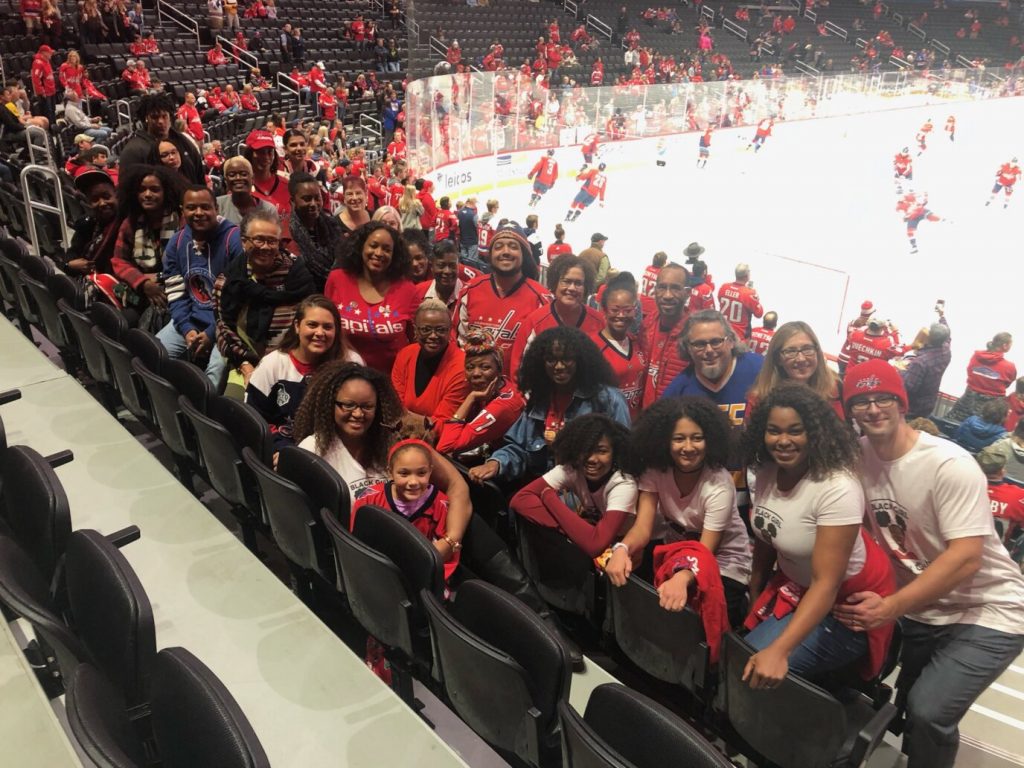
The BGHC awards scholarships to Black girls aged nine-to-18-years-old for hockey expenses as well as a mentorship program for both hockey and the world outside of the rink. The organization also pushes for more inclusion in the sport – both on the ice and in the stands – for the Black community. Kinder is on the scholarship committee for the organization, as well as being a volunteer and mentor. Tinker also plays a large role in the BGHC.
Kinder said that the goals of the organization are to get “more kids of color playing hockey and not only that, but more kids of color playing hockey at affordable costs because hockey isn’t cheap.”
These organizations are relatively new and something most current players did not have when they were starting their hockey careers.
“It’s pretty cool being part of both HPOC and BGHC that I can give back, and can be a mentor,” said Kinder. “I knew that was lacking when I was growing up. There was no outlet or understanding or person there for us, so it’s nice to see it go full circle and us noting what needed help and where we needed help to now being the help that is being provided.”
Koelzer also acknowledged that changing the racial buildup of the sport does not have an overnight solution.
“The most important aspect of growing diversity within the sport of hockey is at the grassroots level, there are just no two ways around it,” said Koelzer. “Hockey is not a sport that you can just pick up in high school and expect to have too much success in.”
Yet, because of these programs, she notes, we will reap the benefits when the players involved grow up, though it will take some time.
“It’s very challenging to kind of keep up the fight, but, I think in the end, the hockey world knows what we need to do,” said Koelzer. “It’s just a matter of keeping that up.”
